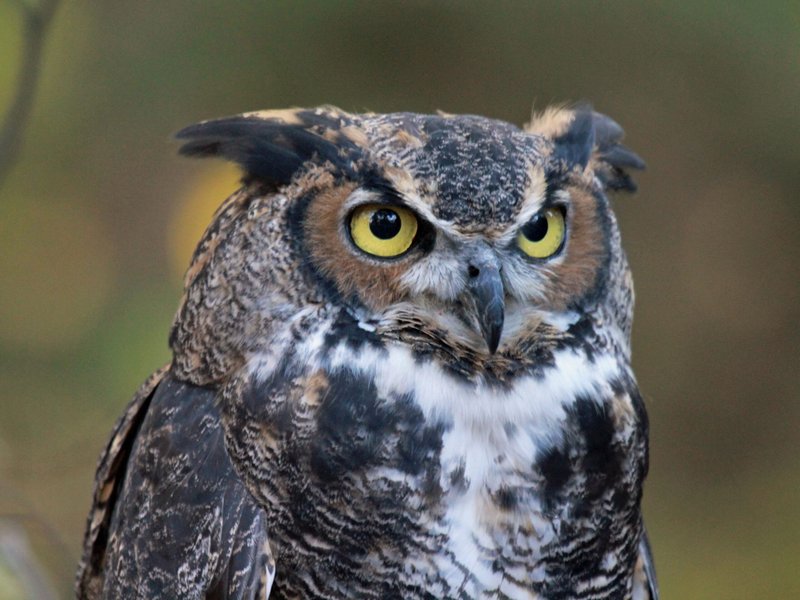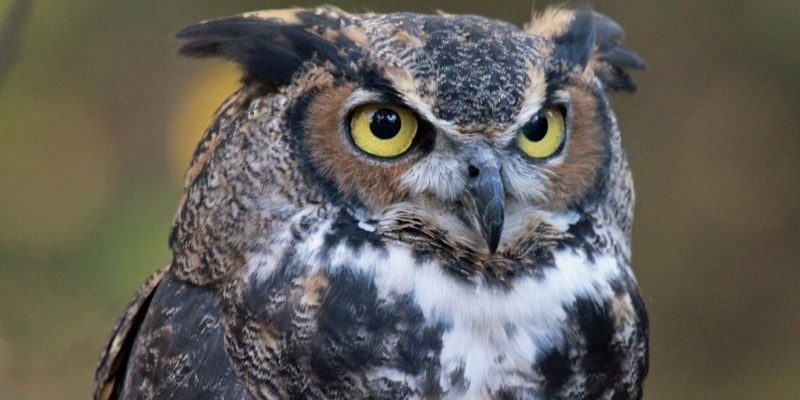
The reality is, the status of the Great Horned Owl is a bit of a mixed bag. They’re not currently classified as threatened or endangered, but that doesn’t mean they aren’t facing challenges. So, let’s dive into the world of the Great Horned Owl and take a closer look at their current status, the threats they encounter, and what that means for their future in our ecosystems.
The Great Horned Owl: Quick Facts
Before we dig deeper, let’s get familiar with some quick facts about the Great Horned Owl. These owls are often called the “tiger of the sky” due to their striking appearance and fierce nature.
- Scientific name: Bubo virginianus
- Habitat: They adapt to various environments, from forests and deserts to urban areas.
- Size: Typically, they stand about 18 to 25 inches tall with a wingspan of 3.3 to 4.8 feet.
- Diet: They are opportunistic hunters, feeding on small mammals, birds, and even reptiles.
- Distinctive features: Look for their tufted “horns” and mottled brown and white feathers.
These characteristics not only make them fascinating but also help them thrive in diverse habitats. Understanding these aspects can give you a better appreciation of their role in the ecosystem.
Current Conservation Status
So, what’s the conservation status of the Great Horned Owl? The good news is that they are not currently classified as endangered or threatened by the International Union for Conservation of Nature (IUCN). This means their population is stable across various regions.
However, it’s important to note that their status can fluctuate based on environmental conditions and human impact. For instance, habitat destruction due to urbanization can affect their nesting sites. Imagine living in a cozy neighborhood, and suddenly, construction crews start tearing down homes. That’s a reality for these owls as cities expand. Despite their adaptability, they still need safe spaces to thrive.
Threats to Great Horned Owls
While the Great Horned Owl is not on the brink of extinction, several threats can impact their numbers. Here are a few key challenges they face:
1. Habitat Loss
As cities and towns spread, natural habitats shrink. This can limit their nesting sites and reduce the availability of prey. Owls need a mix of open areas for hunting and dense trees for nesting. When these habitats are fragmented, it becomes harder for them to survive.
2. Pollution and Chemicals
Like many wildlife species, Great Horned Owls are affected by pollution. Pesticides and other chemicals can accumulate in their food sources. When owls eat contaminated prey, it can lead to serious health issues, including reproductive problems. This can impact their ability to raise healthy chicks.
3. Climate Change
Changing weather patterns can affect food availability and breeding cycles. For example, if temperatures rise too quickly, their usual prey might migrate or become less plentiful. This creates a ripple effect that can disrupt their entire food web.
The Role of Humans in Owl Conservation
You might be asking yourself—how can I help these magnificent owls? Here are some ways humans can play a crucial role in Great Horned Owl conservation:
- Protecting Habitats: Supporting local conservation efforts to preserve natural habitats is key.
- Educating Others: Spreading the word about the importance of wildlife can influence positive change. It’s all about making people aware!
- Reducing Pesticide Use: Opting for organic gardening practices helps create a healthier environment for all wildlife.
- Participating in Citizen Science: Join local birdwatching groups and contribute to data collection on owl sightings. This can help researchers monitor populations more effectively.
Every small action counts. Even if it seems like a drop in the bucket, when everyone contributes, it creates a wave of positive change.
Understanding Their Ecosystem
Great Horned Owls aren’t just beautiful creatures; they also play an important role in their ecosystem. They help control populations of small mammals, which can prevent overpopulation issues. Think of them as nature’s pest control—keeping the balance in check.
By preying upon rodents and other small animals, they maintain a healthy ecosystem. If their numbers decline, we could see a surge in those rodent populations, which can lead to crop damage and other problems for local farmers.
In conclusion, while the Great Horned Owl currently enjoys a stable population status, several threats loom that could endanger them in the future. Habitat loss, pollution, and climate change all pose challenges that require our attention. As stewards of the environment, we all have a role in protecting these wonderful birds and ensuring they continue to thrive in our world.
Remember, it’s not just about protecting the Great Horned Owl; it’s about preserving the delicate balance of nature. Each of us can make choices that support wildlife and contribute to a healthier planet. So, the next time you hear that iconic hoot in the night, take a moment to appreciate these magnificent birds and the role we play in their survival.

